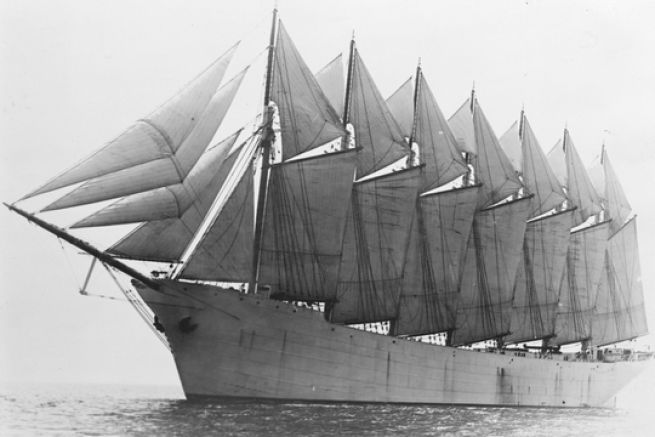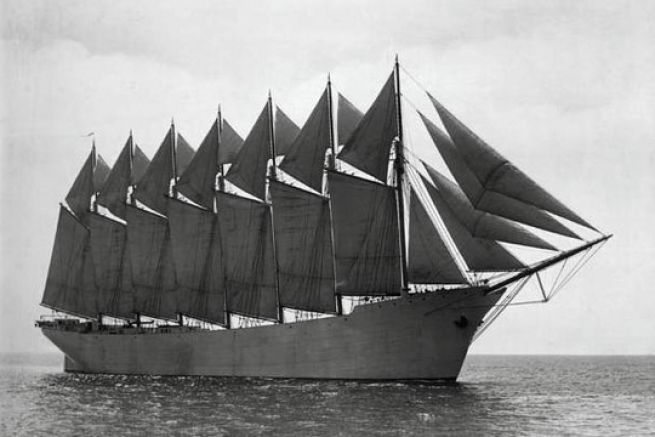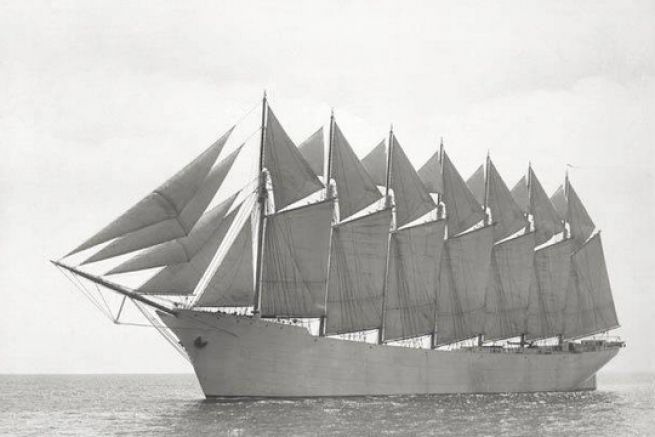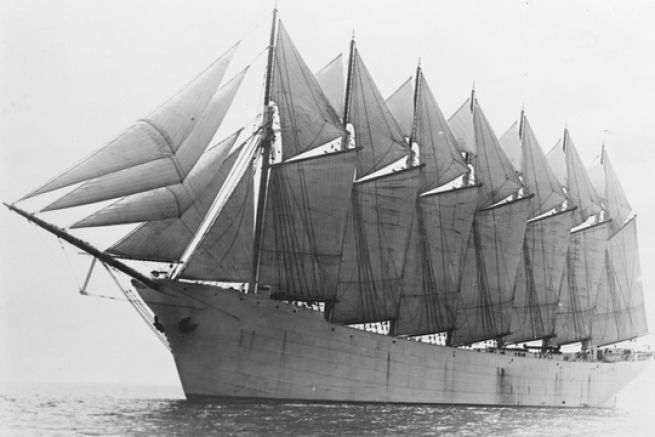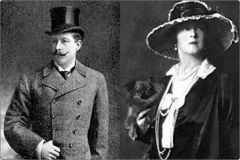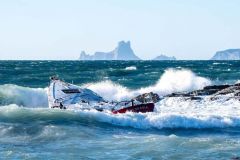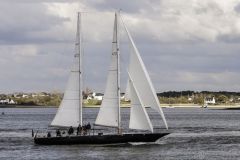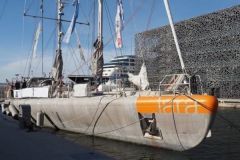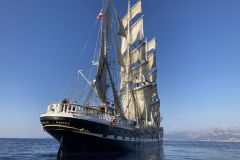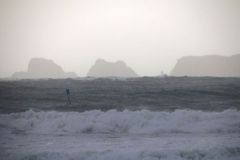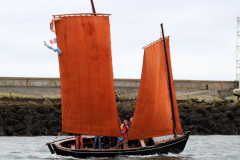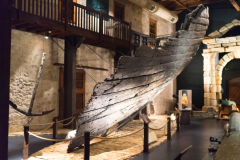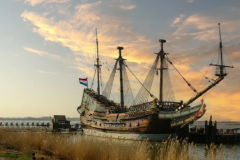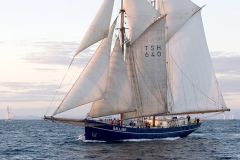The sinking of the Thomas W. Lawson
In 1907, the Thomas W. Lawson was chartered by the Anglo-American Oil Company and set sail on November 19 from the docks of the Marcus Hook refinery (South Philadelphia) to London. It contained 58,000 barrels of oil. Two days before departure, the captain, George Washington Dow, had to recruit 6 new crew members to replace the 6 who resigned. The latter were not qualified seamen and some were not fluent in English.
Leaving the mouth of the Delaware River on November 20, the schooner headed for England under normal weather conditions. But the next day, the weather deteriorated and the boat had to make its first transatlantic trip in very stormy weather. Despite the loss of almost all his sails, all but one of his rescue boats and the obstruction of the ship's pumps due to the mixture of seawater and coal, he managed to reach the Celtic Sea, northwest of the Scilly Islands.
On December 13, as he entered the English Channel, he mistakenly passed near Bishop Rock, Europe's westernmost lighthouse, and the captain anchored the boat between Nundeep and Gunner's Rock, northwest of Annet Island, to overcome an impending storm. He refused several times to abandon his ship despite the requests of the rescue teams of St Agnes and St Mary.
Captain Dow had confidence in his anchoring and only accepted the pilot of Trinity House, Billy "Cook" Hicks, the St. Agnes lifeboat, on Friday, the 13th at 5pm. The two lifeboats of St Agnes and St Mary had to return to shore due to an unconscious crew member and a broken mast.
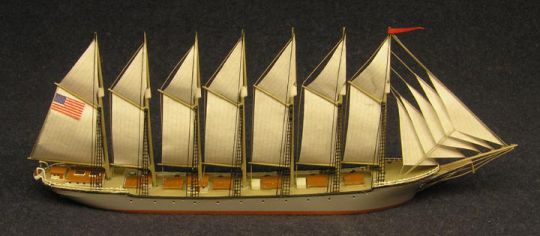
During the night, at about 1:15 a.m., the storm broke out and the port anchor chain broke. Half an hour later, the starboard anchor chain broke, closing the hawser. At the mercy of the raging waves, the schooner broke on the Shag Rock, near Annet, after being stranded on the underwater rocks. The seven masts were broken and fell overboard, taking with them the crew members who had climbed on the rigging for safety, by order of their captain. The stern broke just behind mast No. 6, causing the ship to drift, capsize and sink.
In the morning, the ship's keel could be seen near the reefs before the wreckage sank. 16 of the 18 crew members, as well as Captain "Cook" Hicks of the St. Agnes lifeboat, who had remained on board, disappeared. The only survivors were Captain Georges W. Dow and engineer Edward L. Rowe, probably because they were on deck and not on the rigging and dived into the sea before the boat capsized. The two men were able to find refuge on a submerged rock and were rescued a few hours later by Captain Cook Hicks' son, who went in search of him.
Despite the crew's life jackets, all the sailors died, drowned in the oil bath, the waves raging, and washed away by the schooner's rigging. Four bodies were later found, and some limbs could not be identified. All were buried in the common grave of the St Agnes cemetery.
The wreck found 62 years later
The broken and scattered wreckage was found in 1969. It is located 56 metres deep northeast of Shag Rock and the stern and mast of the brigantine, 400 metres to the southwest. You can explore the wreckage during a scuba dive when the weather is calm. One of the anchors was installed on the Bleak House exterior wall in Broadstairs, in Charles Dickens' former home. There is also the image of the schooner.

 /
/ 